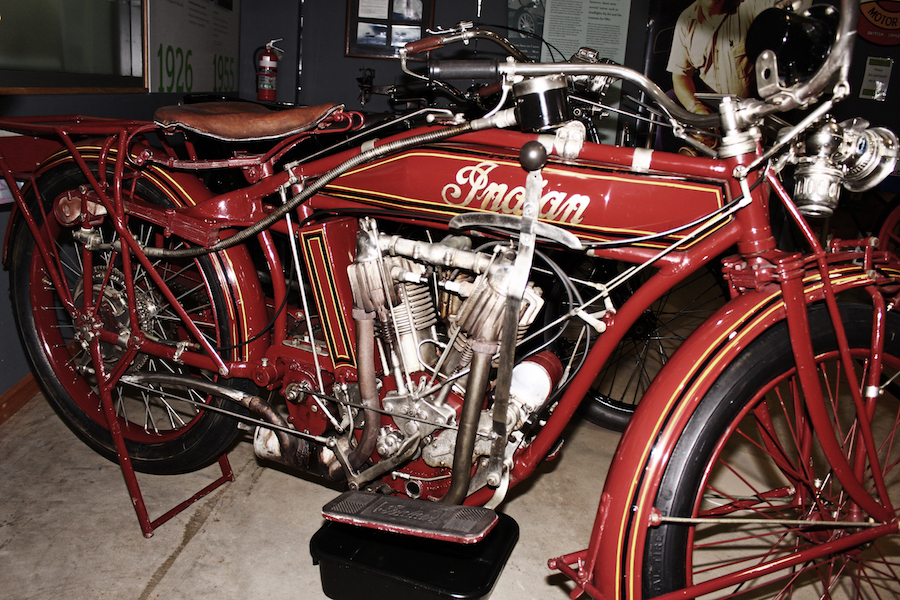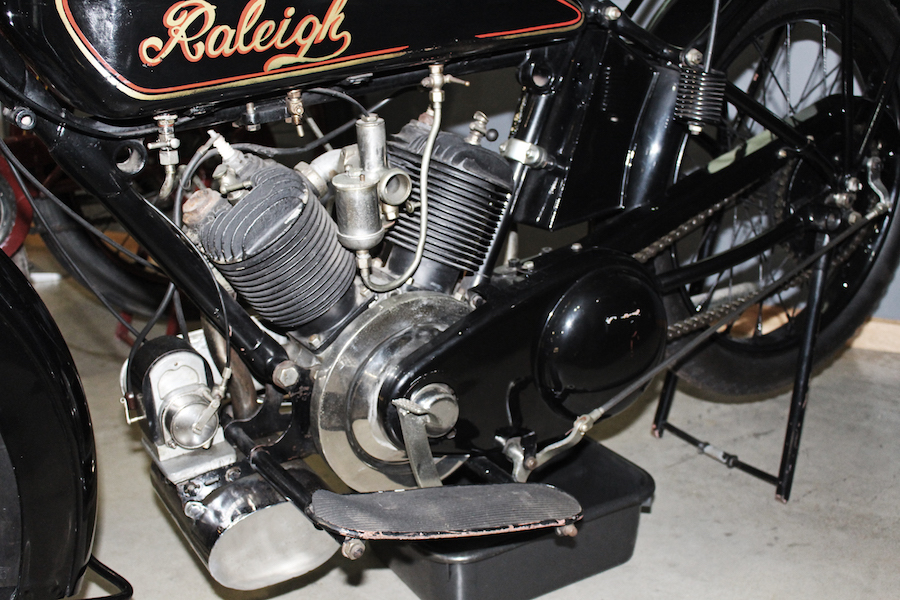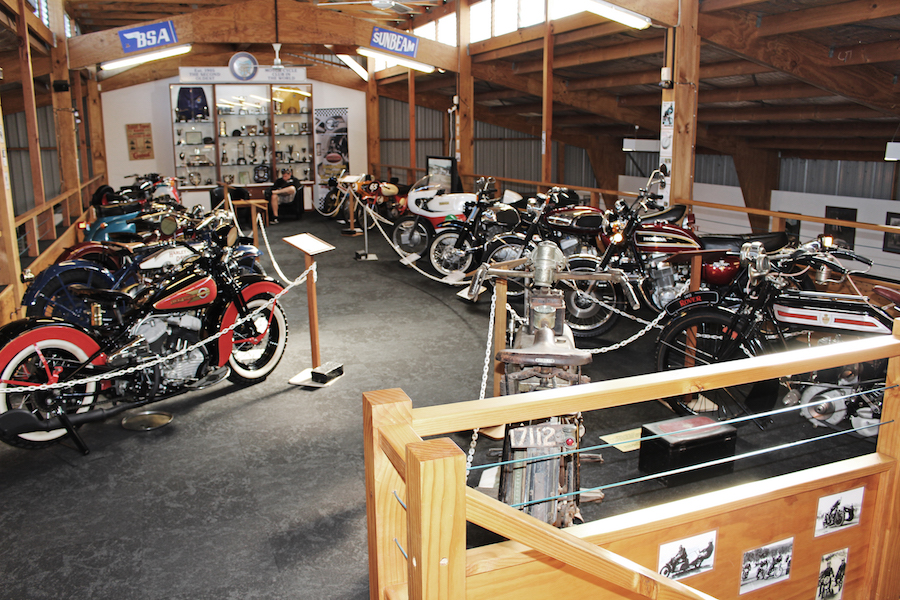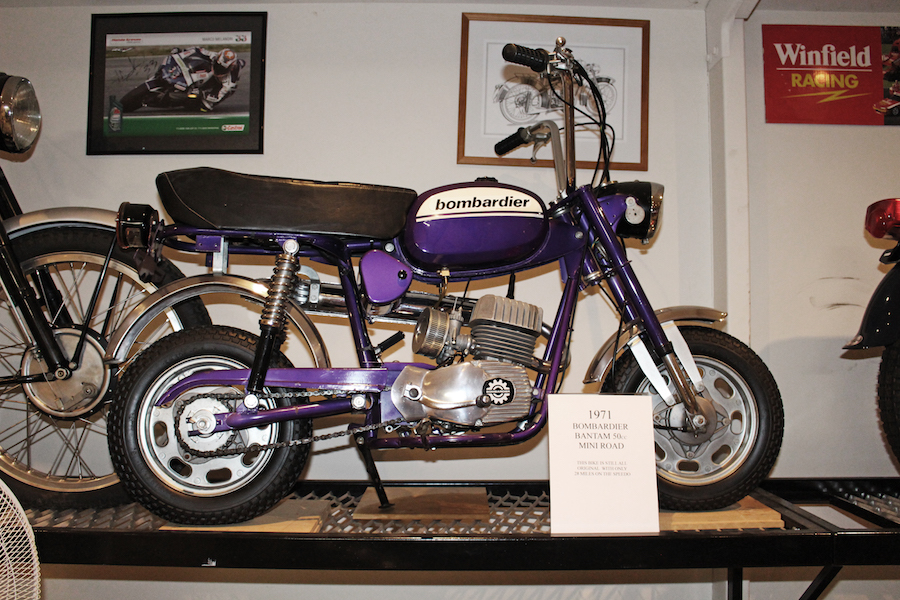The cook was suggesting a holiday for a change of scenery and, as she’d never been to Tasmania, that was where she decided we’d go.
She told me to get on the net and rough out an itinerary, so I went straight to Google and typed in ‘Motorcycle Museums Tasmania’. I soon had three museums that I wanted to visit while my wife scoured various nearby shops: the National Automobile Museum in Launceston; the Bicheno Motorcycle Museum in Bicheno; and the Ransley Veteran Car Collection in Wynyard, which is the source of possibly the best ‘shed find’ story I’ve ever come across.
Ransley Veteran Car Collection
Francis Ransley had a TV repair and PA hire business, and at the 1973 Wynyard show he was talking to an old-timer named Jack Richardson, who had closed his garage when he retired in the mid-60s. Jack had run the family bicycle shop, which also sold motorcycles and had become the local garage, with the shop downstairs and the family home above. Francis took him across the road to his home for a cuppa and a look at the Raleigh he had just finished restoring and, in the course of conversation, Jack asked him if he’d be interested in an old Indian.
Francis was fascinated as Jack explained that the bike had been hidden in the old local garage many years before, along with a lot of other parts. The building had changed hands a few times and at that time was owned by Joe Bugg, the local publican, and was standing empty. Francis approached the publican and asked if he could have a look. But Joe wasn’t happy as the building had been damaged by various people searching for old wares, removing wallpaper and lifting floorboards. He refused permission and Francis left disappointed.
About two months later the pub called because they had a coach party arriving that day and several TVs in the rooms were playing up and needed fixing right away. Francis had his bargaining chip and a deal was struck. Although Joe was convinced nothing was in the old garage, he agreed to let Francis search the building – and accepted an offer of $50 to cover anything Francis might find.
Francis returned next morning with a map Jack had drawn, along with a ladder, rope, block and tackle, and some other gear.
The two-storey building had four chimneys and, according to Jack, the Indian and other bits had been hidden down one of the chimney wells. The bike and other bits were supposedly at the bottom on the ground floor, but access to the well was from inside the roof space.
It took about an hour to remove
junk from the chimney well up to the roof before Francis came across a front tyre. He then hooked the block and tackle on and pulled up a complete 1913 Indian that was in such good condition the dealer’s decal was still on the front fork.
While he was lowering the bike down the outside of the building, the publican, who had been watching from his window, came over and said he thought it was worth more than $50. Francis replied that a deal was a deal and so Joe kept his word. And it was the deal of a lifetime, for Francis anyway. The bike had been stashed there by Jack’s father in 1923 when it was traded in because he considered it too good to wreck and too old to sell.
The Indian has leaf springs front and rear, a drum brake only on the back wheel, and a kick-start arrangement that looks agricultural at best. The headlight is the carbide type, using an acetylene flame, the speedo is driven off the back wheel and sits right where it’ll ‘getya’ if you slide forward suddenly, and the motor is a V-twin side-valve with horizontally mounted spark plugs. Another interesting feature is the twist grips either side that have no cables but an arrangement inside the ’bars that exits to a shaft with universal joints and meets a lever mounted on the head stem. One is obviously the throttle, but the other… Maybe it’s an advance and retard or mixture, but no one could tell me for sure.
Also on show is a 1922 Raleigh. It was Francis’s first project before he moved on to the old cars that make up most of the museum. Someone had broken the external flywheel trying to disassemble the engine, so the engine restoration was left while other work was done and parts found. Francis had finally decided to make a new centre for the flywheel when fate intervened; he went to repair a TV at a farm and the counterweight on the gate was… a Raleigh flywheel!
Most Raleighs were single-cylinder models and V-twins like this are pretty rare.
Location: Wynyard
Open: 9am-5pm, seven days
(May-Sept 10am-4pm)
Website: wondersofwynyard.com
Phone: (03) 6443 8330
National Automobile Museum of Tasmania
Among its many bikes, the National Automobile Museum of Tasmania has another great ‘shed find’ story. It’s a 1939 BSA Silver Star, one of only 50 or so exported to Australia. It was bought new by Tas Laws just before the start of World War II, then buried in the backyard wrapped in oiled canvas when the army started requisitioning private vehicles. After the war it was dug up and only the muffler and exhaust showed any signs of rust, so it was used as daily transport until sold in 1948 to Les Whittle, who later sold it to Alan Freeman.
Alan was killed in a collision with a truck in 1951 and the bike was held for 12 months in police storage, where his younger brother Barry would visit it to reminisce about the trips they’d done together on the BSA. When the Police released the bike in 1952 the family sold it, much to Barry’s disappointment, and it eventually ended up on ‘loan’ for educational purposes in a tertiary college in Launceston. Barry’s career took him interstate and on retirement he settled in Adelaide, where he collected and restored old bikes, always on the lookout for a 1939 BSA Silver Star.
In 2004 on a visit to Launceston he was asking around among other enthusiasts and had contact from two people, who it turned out were both talking about the same bike. Eventually, after a few more trips to Launceston, he was able to view the BSA in question, which was in pretty rough condition, having been stuck away in a shed for about 10 years. A spark of recognition appeared in Barry’s eye and after checking the engine and frame numbers his suspicions were confirmed – it
was his brothers old bike. Barry bought it, started restoration and finished it just in time to ride and complete the 2008 Bay to Birdwood event.
Other bikes in the museum are a 1973 Z900 Kawasaki, 1976 Honda Four 750 K6, 1915 Douglas, 1951 Vincent Black Shadow, an Australian-made 1914 Ward-JAP (I’ll bet you’ve never heard of them), 1923 and 1942 Harley-Davidsons, a 1938 Indian Sport Scout, a 1912 Rover, a 1974 Ducati 750 Super Sport, a 1976 900 Super Sport and a 1957 Ducati 65T (65cc), a 1961 Honda Dream (305cc), a 1969 Bridgestone 350 GTR, and a 1967 Yamaha TD1-C for the road race fans, as well as bikes from Morbidelli and Kreidler.
The Bridgestone 350 is an interesting machine, built by a company much better known for its tyres. The company dabbled in the motorcycle market for a while, building bikes that were ahead of the other Japanese factories in many ways. They used rotary valve induction and oil injection at a time when most competitors’ bikes were still using pre-mix and had yet to adopt reed valves. A six-speed gearbox was ahead of the mostly four-speed units common in the competition, but it was of the ‘rotary’ type, meaning if you miscounted and tried to change up again after reaching top it went back to first.
The Bridgestone 350 was the bike that introduced many unsuspecting riders to the power wheelie and, while very well built, they were expensive – sometimes costing as much as bikes of twice the capacity. Performance was good, with 28kW giving a top speed of 153km/h and an average consumption of 4.3L/100km.
About 9000 350 GTRs were built between 1967 and 1971 before Bridgestone decided to concentrate on tyres instead. Some claim that pressure from the other bike manufacturers – and threats of sourcing tyres elsewhere – may have influenced the decision.
Location: Launceston
Open: 9am-5pm, seven days
(winter 10am-4pm)
Website: www.namt.com.au
Phone: (03) 6334 8888
Bicheno Motorcycle Museum
This gem on the east coast of Tasmania has a surprising number of bikes, though it’s hard to get a good all-round look at some due to the small building. Nevertheless, it contains some terrific restorations and a few oddities, making it a must-see on any old-bike odyssey around Tasmania.
One of the first models to catch my eye was an HRD Vincent Rapide, which I’ve always regarded as one of the best-looking bikes ever built. This big 1000cc V-twin designed by Aussie Phil Irving was arguably the world’s first superbike, especially the Black Shadow model. It was innovative in its day with the engine used as a stressed member, a cantilever rear suspension set-up, and quick-release wheels. The mudguard was hinged for easy changing of the rear wheel and the wheel was reversible with a sprocket on each side for quick gearing changes.
Whoever asked, ‘What about the rear brake?’ – go to the top of the class. The Vincent had twin single leading shoe drums front and rear so turning the rear wheel to change the gearing was not a problem.
The other standout feature was a huge speedo fitted above the handlebars that read up to 150mph.
Elsewhere in the museum, someone has shown ingenuity by converting a BSA Bantam road racer to water cooling, and there’s a 1958 Guazzoni – a make I’d never heard of before. Aldo Guazzoni started out as a mechanic and dealer in Milan selling Moto Morini bikes and then sold his own with help from Franco Morini and Vittorio Minarelli, who built and badged the bikes in their FBM (Fabbrica Bolognese Motocicli) factory in Bologna. A 1965 Motobi is also on display, notable for its unusual egg-shaped four-stroke engine. The Motobi name was started by Giuseppe Benelli in 1949, one of six Benelli brothers from that famous marque.
Of even more interest to me was a British hybrid that’s the only one of its type in the world. Tribsas are well enough known – a Triumph BSA mixture that’s hardly surprising given the similarities between the two makes in later
years – and a Triton built with a Triumph motor in a Norton frame was another fairly common boy-racer special in years past, while a Norvin, built by combining a Vincent V-twin with a Norton frame, is rare, but in Bicheno is the one-off Noriel.
A hand-built special put together in 2000, it combines a Norton Featherbed frame, Norton gearbox, Norton Manx tank and an Ariel Square Four engine. It is a thing of beauty and a mechanical work of art that looks like it came out of a factory rather than someone’s own workshop. Any keen aficionado of British bikes would drool over it.
If you’re planning a trip to our southernmost state then make sure you get these museums on your itinerary. And I’m told the nearby shopping is not too bad, so the cook was happy to give me free rein to take my time while she indulged her shopping gene.
There are worse ways to spend a holiday.
Location: Bicheno
Open: 9am-5pm, most days
Phone: (03) 6375 1485








